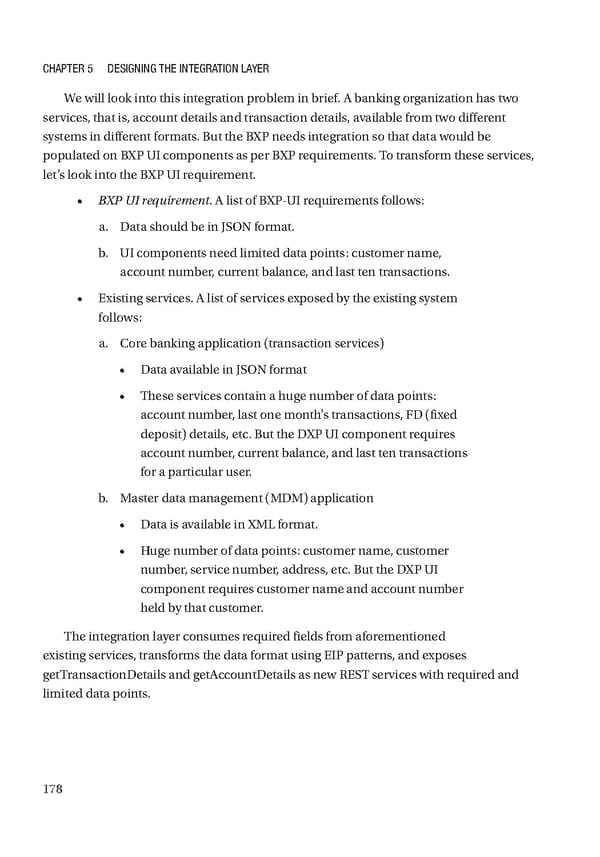Chapter 5 Designing the integration Layer We will look into this integration problem in brief. A banking organization has two services, that is, account details and transaction details, available from two different systems in different formats. But the BXP needs integration so that data would be populated on BXP UI components as per BXP requirements. To transform these services, let’s look into the BXP UI requirement. • BXP UI requirement. A list of BXP-UI requirements follows: a. Data should be in JSON format. b. UI components need limited data points: customer name, account number, current balance, and last ten transactions. • Existing services. A list of services exposed by the existing system follows: a. Core banking application (transaction services) • Data available in JSON format • These services contain a huge number of data points: account number, last one month’s transactions, FD (fixed deposit) details, etc. But the DXP UI component requires account number, current balance, and last ten transactions for a particular user. b. Master data management (MDM) application • Data is available in XML format. • Huge number of data points: customer name, customer number, service number, address, etc. But the DXP UI component requires customer name and account number held by that customer. The integration layer consumes required fields from aforementioned existing services, transforms the data format using EIP patterns, and exposes getTransactionDetails and getAccountDetails as new REST services with required and limited data points. 178
 Building Digital Experience Platforms Page 194 Page 196
Building Digital Experience Platforms Page 194 Page 196